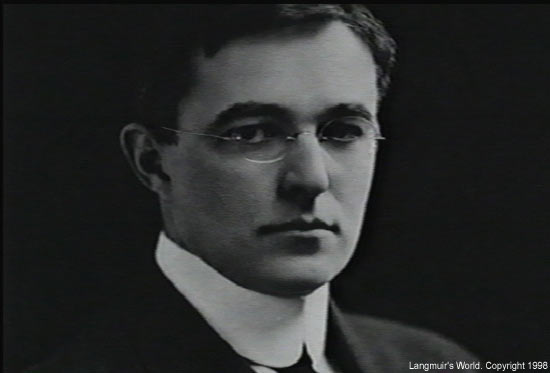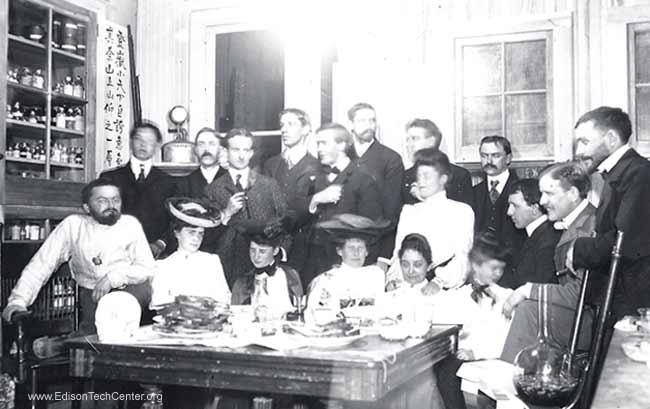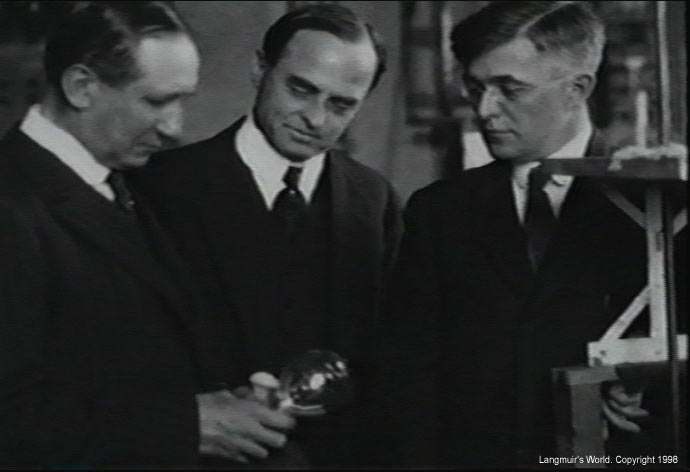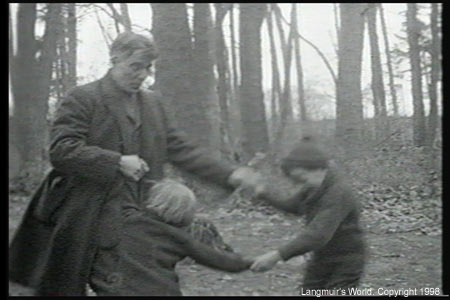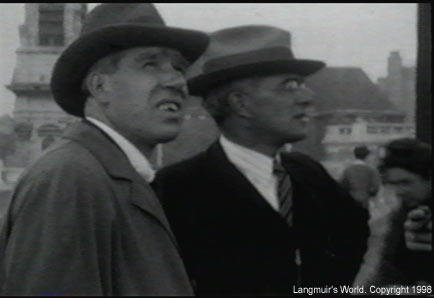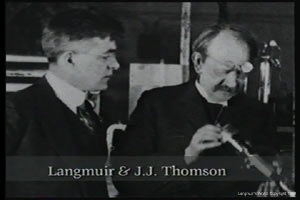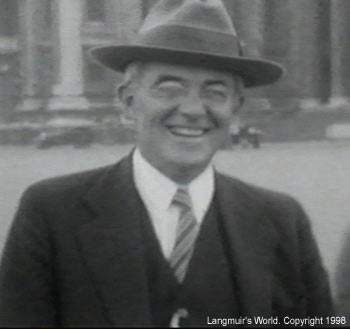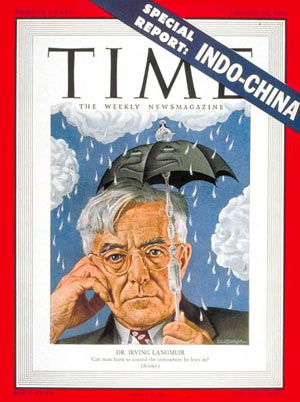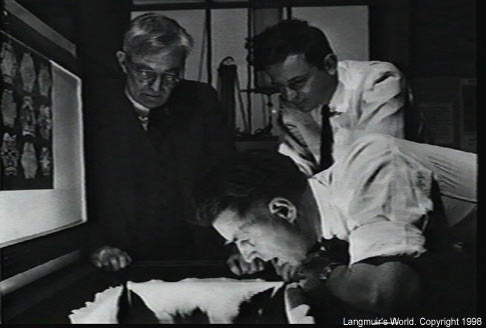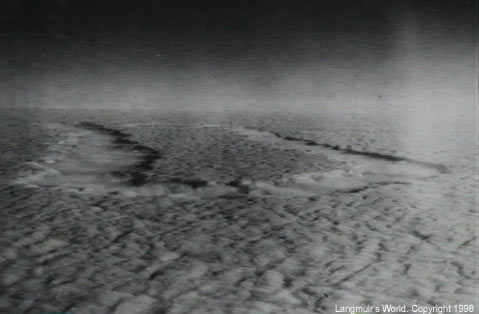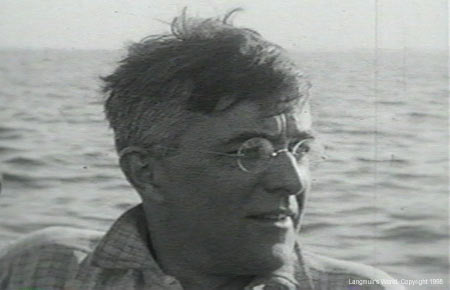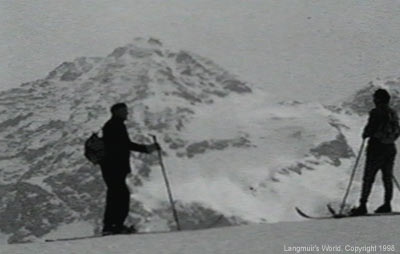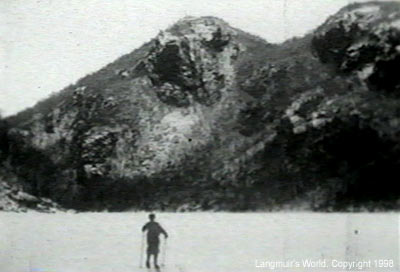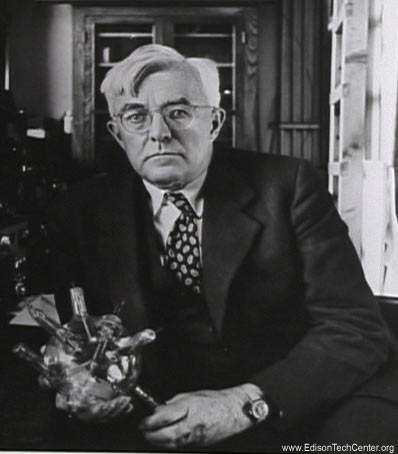
|
Engineering Hall of Fame |
Irving Langmuir
A world-changing engineer, physicist and chemist(1881-1957)
Inventor of better lightbulbs, high vacuum tubes, surface films, cloud seeding, and many other creations
While at General Electric from 1909 to 1950, Langmuir advanced the fields of physics and chemistry. His great contributions included mathematical equations, theories and physical inventions. He was awarded the 1932 Nobel Prize in Chemistry for his work in surface chemistry. In addition to being a great scientist and engineer Langmuir was known for his well rounded personality and hobbies. He promoted the growth of the Boy Scouts of America, led environmental conservation efforts, and pioneered iceboating and the sport of skiing in North America. He is one of the 20th century's most fascinating engineers.
Early years
Irving Langmuir, an American chemist and physicist, was born on January 31, 1881, in Brooklyn, NY. Langmuir graduated with a B.S. from the Columbia University School of Mines in 1903 and did postgraduate work in chemistry under Nobel laureate Walther Nernst in Göttingen, Germany. He earned his Ph.D. degree in 1906. Langmuir's first contribution to society was his work in assisting Walther Nernst in the creation of the Nernst Lamp. This lamp was a great improvement over the incandescent lamps of the time. Ironically Langmuir would later go on to assist General Electric in developing a light to compete with Nernst's successful creation.
The Nernst Lamp was a sign that the future of invention would be dominated by engineers with a background in science. The great era of the "tinkerers" like Edison who achieved by trial and error was coming to an end. Langmuir would become one of the great science-educated engineers of the future. The 1890s and 1910s was the great period of transition to a new era of science.
Below: video on the Nernst Lamp
Return to the US:
After picking up the latest developments in physics and chemistry from Europe, Langmuir returned to the US. He took his first job at Stevens Institute of Technology in Hoboken, NJ until 1909. He worked long hours for low pay at the educational institution. He saw education jobs of the time in the United States to be hopelessly underpaid. He decided to make the move to the commercial realm and applied for a job at General Electric.
The G.E. Research Laboratory in Schenectady, NY was newly established when Langmuir joined. The lab had been created in order to compete with developments coming out of Germany. By collecting scientific minds in one lab and encouraging communication, GE management felt it could create an environment ripe for developing the next great and lucrative invention. Although the lab environment was quite open and encouraged exploration of all ideas, they did have several directed efforts.
Above: The early days of the GE Research Lab. The short man on the left with glasses is C.P. Steinmetz. He pioneered AC power developments and founded the lab.The Lightbulb Race:
General Electric had been born from many companies in 1892. Thomas Edison's lightbulb patents had kept revenue coming in for years. The Nernst Lamp and tantalum lightbulb emerged as a major threat after 1901. GE management set lab workers to the task of making the next great lamp, one that would last longer and work at a better efficiency. Material used in lightbulb incandescent filaments needed the common trait of having a high melting point, this way the filament would get hot enough to emit light, but not break down. Physics was key to pressing the limits of lightbulb performance because engineers could use variations in pressure and elements to achieve new results. Langmuir was one of the new students of physics who could decode a world which Edison had only scratched the surface of.
Filament Material Melting point at sea level Tantalum 3020 C (5486 F) Tungsten 3422 C (6191 F) Carbon filament 3550 C (6422 F)
Coworker William D. Coolidge made the greatest development in electric lighting in the 20th century when he developed a ductile tungsten filament. Tungsten had been too fragile to be serious competition to the Siemens-Halske tantalum filament. The ductile tungsten filament lasted longer than any other lamp, was more durable, and was cheap to make. Langmuir immediately jumped in on experimentation with tungsten filament bulbs and vacuum tubes.
Photo Above: Langmuir(left) and lab director Willis Whitney(center) pose for a film with a new lightbulbHis initial contributions to General Electric and science came from his study of light bulbs (which was a continuation of his Ph.D. work). First his improvement of vacuum techniques led to the invention of the high-vacuum tube. A year later he discovered that the lifetime of a tungsten filament was greatly lengthened by filling the bulb with an inert gas, such as argon, which is an important part of the modern day incandescent light bulb.
Below: A video on the incandescent bulb which highlights Langmuir's work towards the end:
Schenectady, New York: Joining the "GE Family"
Langmuir settled in Schenectady not far from other greatly talented individuals. His neighborhood called the "GE plot" contained a small community of scientists and managers living in luxurious houses. This close knit social network contained greats like Charles Steinmetz, Willis Whitney, EW Rice and more. He married Marion Mersereau in 1912. They had a son, Kenneth, and a daughter, Barbara. Children of the GE plot could walk between houses since all lived within one square mile, families of PR managers, finance men, executives, and engineers mingled and the concept of the "GE Family" was born.
Above: Langmuir the family manThe Langmuir Equation:
In 1916 while at the lab Langmuir created the Langmuir Equation which has become a vital mathematical tool in working with surface chemistry. The equation helps one understand how molecules will coat a solid surface when the medium above is at a given concentration or pressure at a fixed temperature. When molecules cover a surface in a single layer there are only certain numbers of empty spaces left which become filled depending on the pressure of the gas. You can think of this as a flat surface covered in balls (molecules). Each ball has a given width and you can only squeeze so many onto the surface. The pressure of the gas above determines how easily more can be squeezed onto the surface. At a certain point it will become 100% saturated.

P - gas pressure / concentration
Alfa - is the Langmuir adsorption constant
Theta - fractional coverage of the surface
Learn more about it here.Application of the Langmuir Equation: Langmuir developed a hydrogen molecular coating on the inside of the lightbulb. This helped increase the life of the bulb by decreasing the amount of blackening which occurs over time.
Plasma and Physics Studies:
As he continued to study filaments in a vacuum and different gas environments he began to study the emission of charged particles from hot filaments (thermionic emission). He was one of the first scientists to work with plasmas and was the first to call these ionized gases by that name.
Irving Langmuir developed a life long friendship with world science icon Niels Bohr. Bohr visited Langmuir at his home in Schenectady and the two would meet at many conferences around the world over the years.
Photo left: Bohr and Langmuir in Europe
 |
Langmuir introduced the concept of electron temperature and in 1924 invented the diagnostic method for measuring both temperature and density with a thermionic probe, now called a Langmuir probe. This is commonly used in plasma physics. The current of a biased probe tip is measured as a function of bias voltage to determine the local plasma temperature and density.
Right: Langmuir and scientific icon J.J. Thomson
Below: A Langmuir Probe
Photo: Swedish Institute of Space Physics
Irving Langmuir also discovered atomic hydrogen, which he put to use by inventing the atomic hydrogen welding process. "AHW" as it is also known reaches temperatures of up to 4000 C (the acetylene torch only reaches a maximum of 3300 C.). The high temperatures made it possible to melt chromium and aluminum.
The process uses two tungsten electrodes in a hydrogen gas.The gas atmosphere protects metals from being contaminated by oxygen and other gases in the earth's atmosphere. Normally in welding "flux" is used to to remove impurities and prevent oxides from forming as one welds. In AHW less flux is required.
Below: 1921 New Jersey - Langmuir stands among some of the greatest inventors and scientists of the time.

Later years:
Following World War I, Langmuir contributed to atomic theory and the understanding of atomic structure by defining the modern concept of valence shells and isotopes.
Langmuir attended the 1927 Solvay Physics Conference, Brussels, Belgium. You can learn more about this conference in a video here. The photo below shows some of the participants including Langmuir.
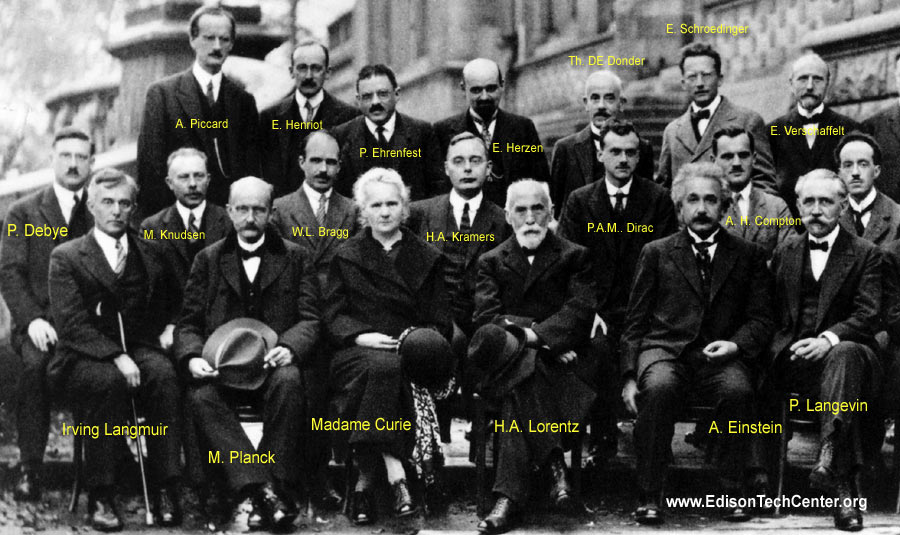
Irving Langmuir joined Katherine Blodgett to study thin films and surface adsorption. They introduced the concept of a monolayer (a layer of material one molecule thick) and the two dimensional physics which describes such a surface. In 1932 he received the Nobel Prize for Chemistry "for his discoveries and investigations in surface chemistry."
Molecular coatings were implemented in film cameras starting with "Gone with the Wind". The coatings are also used on aircraft parts to make it harder for ice to form on wing surfaces.
"Surface chemistry can be roughly defined as the study of chemical reactions at interfaces. It is closely related to surface engineering, which aims at modifying the chemical composition of a surface by incorporation of selected elements or functional groups that produce various desired effects or improvements in the properties of the surface or interface." - Wikipedia
Langmuir: Master of Weather
Photo: Time MagazineDuring World War II, Langmuir worked to further develop protective smoke screens and methods for deicing aircraft wings. This research led him to discover that the introduction of dry ice and iodide into a sufficiently moist cloud of low temperature could induce precipitation, allowing some degree of weather control.
Langmuir and assistant Vincent Schaefer worked closely together during the development of cloud seeding. Technological developments where man "plays god" do seem attract a lot of attention, and this is what happened. The media attention was not always welcome. When the lab attempted to cloud seed a hurricane off the US east coast in order to weaken it, the hurricane changed course and struck the Carolinas causing a lot of damage. After this event General Electric did not get involved in any further efforts to control hurricanes. Cloud seeding is used today around the world for other purposes. Vail Resorts in Colorado uses ground based cloud seeding to induce snowfall in the immediate vicinity of it's ski resorts. Cloud seeding is used in some semiarid climates to increase rainfall for crops.
Photo Above: Langmuir and Vincent Schaefer. Schaefer was a lab assistant who despite not having a formal education was a genius in developing new inventions. He and Langmuir worked together to develop cloud seeding.
Photo Below: The team at General Electric first tested cloud seeding over the small city of Amsterdam, New York. In the photo you can see how dropping silver iodide below the plane as the plane pulled a U-turn condensed water droplets and induced rain.
Hobbies and Activism:
In connection with Langmuir's work with weather was his fascination with nature. He did a wide variety of outdoor sports and promoted these sports in his community. He loved flying, sailing, swimming, ice boating, backcountry skiing, and anything else that caught is his adventuresome spirit.
Right: Langmuir loved sailing among other hobbies. His hobbies led him on many trips to beautiful places around the world.
Above: Langmuir in the Alps, he learned to ski from the first generation of ski mountaineers in Austria.
The First Ski Mountaineer
Langmuir was the first person to bring modern ski-mountaineering technique to North America and spread the concept of "mountain skiing".
When going to school in Germany from 1903-1906 he took frequent trips to the Alps where he learned the Arlberg technique of skiing. This technique allowed people to ski from high and steep summits for the first time. As soon as Langmuir returned to New York he set about on a series of first descents. While skiing had already been in North America for over 50 years, no one had put emphasis on skiing mountains from top to bottom. Skiing had been viewed before as just a means of delivering mail through the Sierras, or playing around on the side of a hill with friends.
Langmuir climbed and skied several thousand vertical feet from the summit of Slide and Wittenberg Mountains in the Catskills in late February of 1907. The steep wooded north facing slopes riddled with small cliffs were only possible using his latest ski binding technology along with advanced turning techniques from Austria. This became the first event of ski mountaineering in North America.
After this feat he made first ski descents of Mount Greylock in Massachusetts and Haystack Mtn in the Adirondacks. He influenced and encouraged people like John Apperson who went on to become legends in the early days of skiing. Two years later The Dartmouth Outing Club follows Langmuir's lead and takes on mountain skiing. They perform the first ski descents of Washington, Katahdin and other challenging summits of the Northeast.
Langmuir taught many kids to ski on group outings into the Adirondacks. At this time, prior to the 1932 Olympics, skiing was far from being a mainstream sport. He encouraged the early growth of skiing and started a spark which lead to widespread growth. After the 32' Olympics in Lake Placid the radio coverage of skiing events caused the first countrywide explosion in popularity. On a side note Langmuir was the first person in the Northeast to bring and promote metal edged skis from Europe. He would take teenagers in groups up to the Lake George and North Creek regions to ski. He encouraged others to build their own skis, or modify their skis with homemade metal edges. In the beginning (prior to 1930s) skis were not available in stores. In garages across the 'GE Plot' neighborhood kids were building their own skis to be used at Gore Mountain. Irving Langmuir and GE Research Lab Director Guy Suits helped organize the first snow trains up to the Adirondacks. These GE engineers and other parents doubled as chaperones to trainloads of kids. Langmuir made his mark in the history of skiing in America.
Langmuir skiing on Ausable Lakes in the Adirondack Mountains
Conservation Efforts
Irving Langmuir and friend John Apperson were involved in the blooming conservation efforts in the Adirondack Mountains. This 6 million acre area had been logged for years, and other forms development threatened to follow this first wave of human use. Langmuir and other GE engineers used the mountains as a playground for boating, iceboating, skiing, and other activities. Their viewpoint was that this was everyone's recreational grounds and it must be protected.
Apperson was a very strong activist in promotion of conservation. Apperson and Langmuir believed that the islands of Lake George belonged to the public. This viewpoint differed with some General Electric Executives. Apperson's quasi-illegal antics in protest of development lead to trouble. Luckily Apperson had friends in the right places and Langmuir was able to help him save his job. There was a feeling among many engineers in Schenectady that conservation was important despite the viewpoints of most citizens of the industrial revolution period. Many engineers provided financial support to state lobbyists. The Adirondack Park's unique laws are a product of the early work of New York State conservationists.
ORDER THE FULL STORY on DVD:
Langmuir's World - Watch the promo below and order using the contact at the end
Sources:
The General Electric Story - By the Hall of History
Langmuir's World - by Roger Summerhayes
The Schenectady Museum
Wild Snow by Lou Dawson
The Adirondack Research Library, Niskayuna, NY
Photo/Video use:
Commercial entities must pay for use of photos/graphics/videos in their web pages/videos/publications
No one commercial or public is allow to alter Edison Tech Center photos/graphics/videos.
Educational Use: Students and teachers may use photos and videos for school. Graphics and photos must retain the Edison Tech Center watermark or captions and remain unmanipulated except for sizing.Permissions - Videos: We do not email, FTP, or send videos/graphics to anyone except in DVD form. Payment is needed for this service. See our donate page for pricing, and our catalogue for a listing of videos on DVD.
Professional video production companies may get videos in data form with signed license agreements and payment at commercial rates.
Volunteer - About Us - Resources - Videos - Engineering Hall of Fame - Donate - Contact Us
copyright 2010 Edison Tech Center
